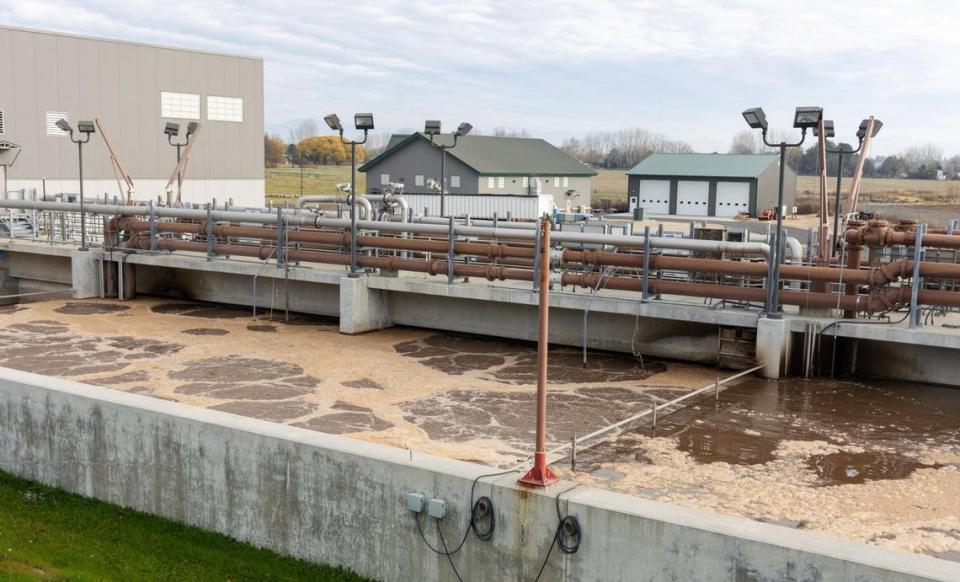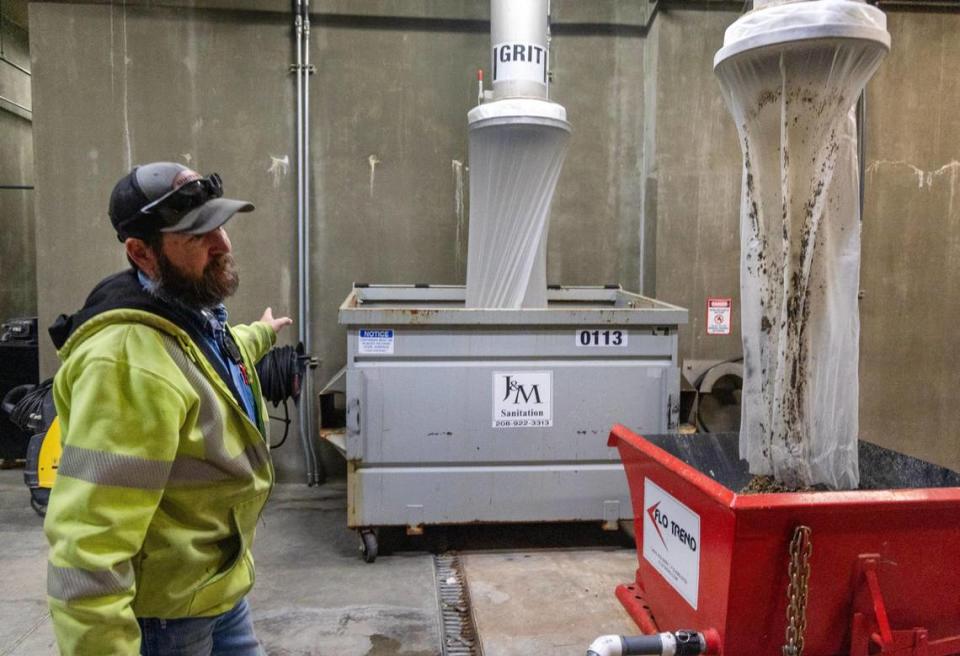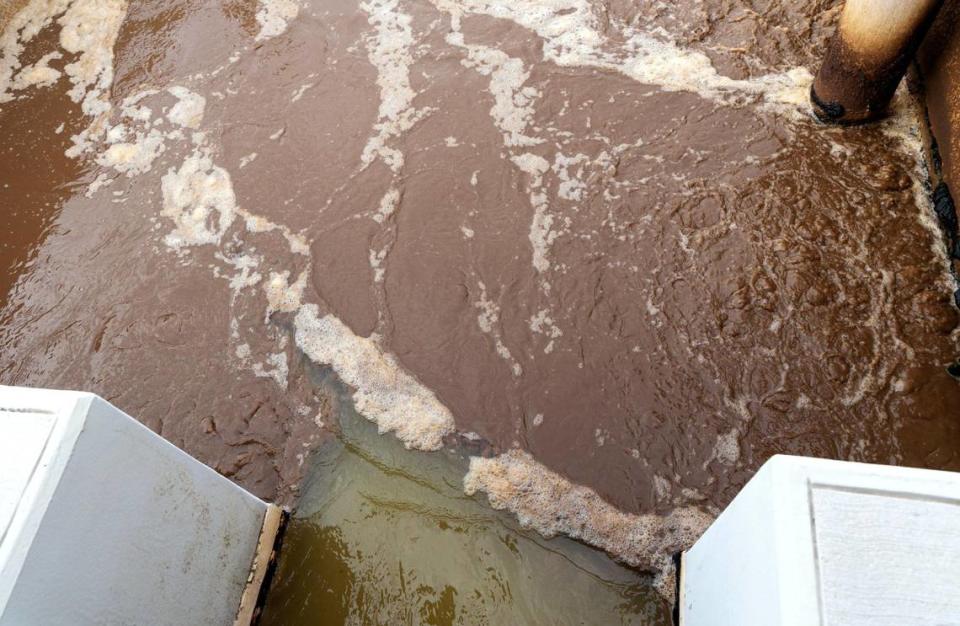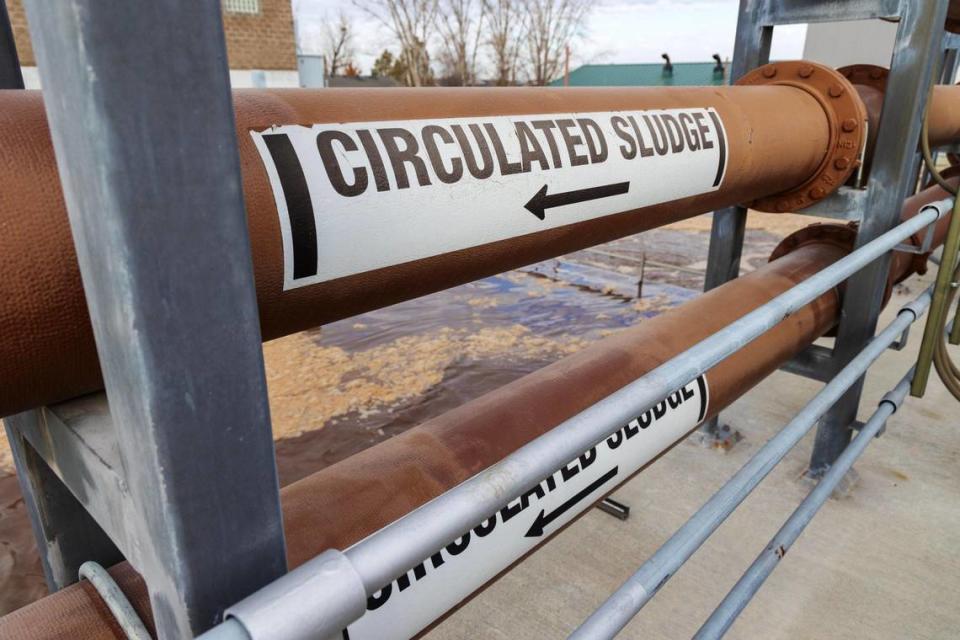Boise-area sewage treatment plant violated clean-water law 16 times. Here’s what happened
Kuna’s North Wastewater Treatment Plant was a state-of-the-art plant when it was built in 2009. But 14 years have passed, and the plant’s equipment has begun to fail and needs replacing. That is why the city’s Public Works Department says the plant fell out of compliance with the Idaho Department of Environmental Quality standards last year.
In 2022, the plant violated the federal Clean Water Act 16 times over a three-month period, according to the Idaho Conservation League, a statewide environmental conservation group. Those violations were a 138% increase from 2021.
The plant had 16 instances where it was over the legal limits of ammonia that can be released into Indian Creek once the water has been treated. An excess of ammonia in a body of water leading to toxic buildup in the internal tissues and blood of aquatic organisms and potentially death, the U.S. Environmental Protection Agency said.
Indian Creek is a Boise River tributary that runs west through Ada County and northwest from Kuna through Nampa to Caldwell.
Why such a large increase?
Paul Stevens, Kuna’s public works director, attributes the violations to factors including equipment failures, harsh winter weather and a lull in the plant’s biological treatment process.

Will Tiedemann, conservation associate with the Idaho Conservation League in Boise, said many of the small towns in Idaho struggle to come up with the budget to replace equipment as it ages. Aging equipment is a common reason why treatment plants have violations, Tiedemann said. But he said plant managers should have the foresight to predict when equipment may fail.
Equipment failure and aging
After 14 years of operating, the plant has reached a point where its machines are starting to show wear and tear, said Travis Fleming, wastewater supervisor at the plant.
“Some of the automated equipment runs all the time, 24/7,” Fleming said in an interview at the plant. “They are working in pretty harsh conditions. It’s a constant grind. So there’s some difficulties with that stuff.”
The doubling in the number of people that the treatment system serves takes a toll on the equipment, Fleming said. When the plant opened, it served approximately 14,000 households. Now it serves about 30,000.

“The machinery has to run harder, the more water that we take in,” he said.
On top of that, last year it was difficult for the plant to get parts and replacement equipment, Stevens said. The equipment vendors cited COVID-19 and the war in Ukraine as reasons they couldn’t get parts, Stevens said.
Winter weather and ... bugs?
The North Kuna Wastewater Treatment plant uses a system called bioreactor treatment, where microorganisms and bacteria, which plant workers call “bugs,” break down and eat organics and solids in the wastewater.
When something goes wrong, when the bugs are not eating enough solid waste or there is not enough oxygen to stimulate their activity, the quality of the treated water declines. That hurts the plant’s test results.
Stevens said the cold winter and harsh weather last year slowed the bugs.
Any solids left over after the bugs have broken down what they can, must be disposed of in the landfill. One of the issues facing the Kuna plant was that its personnel couldn’t transport the solid waste to the landfill fast enough using their contract trucking company. To fix that problem, the city bought its own truck.

Since the violations were issued, the city has spent $1.3 million “to correct the issues and prevent reoccurrence,” Stevens said.
The city also purchased new airblowers and replaced its membranes, which filter the liquid from the solids in the process.
The wastewater treatment employees said the new equipment has helped them get back in compliance with regulations. Mike Nadeau, the wastewater treatment department lead, showed the Idaho Statesman a cup of clear, treated water, to demonstrate that the plant had successfully cleaned it.
Ammonia discharge
One of the 16 ammonia violations was a discharge of over 7,000 pounds of ammonia, according to the Conservation League report.
When asked about the large amount of ammonia released into Indian Creek, Stevens said with the amount of wastewater the plant treats, 7,000 pounds is not much.
“The 7,301 pounds of ammonia was spread over approximately six months,” Stevens said. “Or approximately 1,166 pounds per month. Which works out to approximately 40 pounds per day, or one sack of commercially available fertilizer per day.”
Even so, Stevens said the workers at the plant take the violations seriously.

“When we do get out (of compliance) like we did, it is high stress in here,” Stevens said. “You could cut the air with a knife. It was really bad. We took it seriously.”
Tiedemann said the Kuna wastewater treatment plant also had violations in February 2023 related to a high level of chlorine in the treated water. The plant also had issues with test samples in June and August.
He worried that there may be a consistent pattern of management problems.
“Maybe there’s just been a series of unfortunate events that are stacking up and related to equipment, but when you do you see a pattern, I think it’s fair to ask whether there’s bigger questions at play,” Tiedemann said.
Stevens did not immediately answer emailed questions seeking comment about possible management problems.
This Boise-area city ousted its longtime city clerk. She and the public wonder why
Environmentalists fought possible open-pit mine near Boise River. Now this is happening

